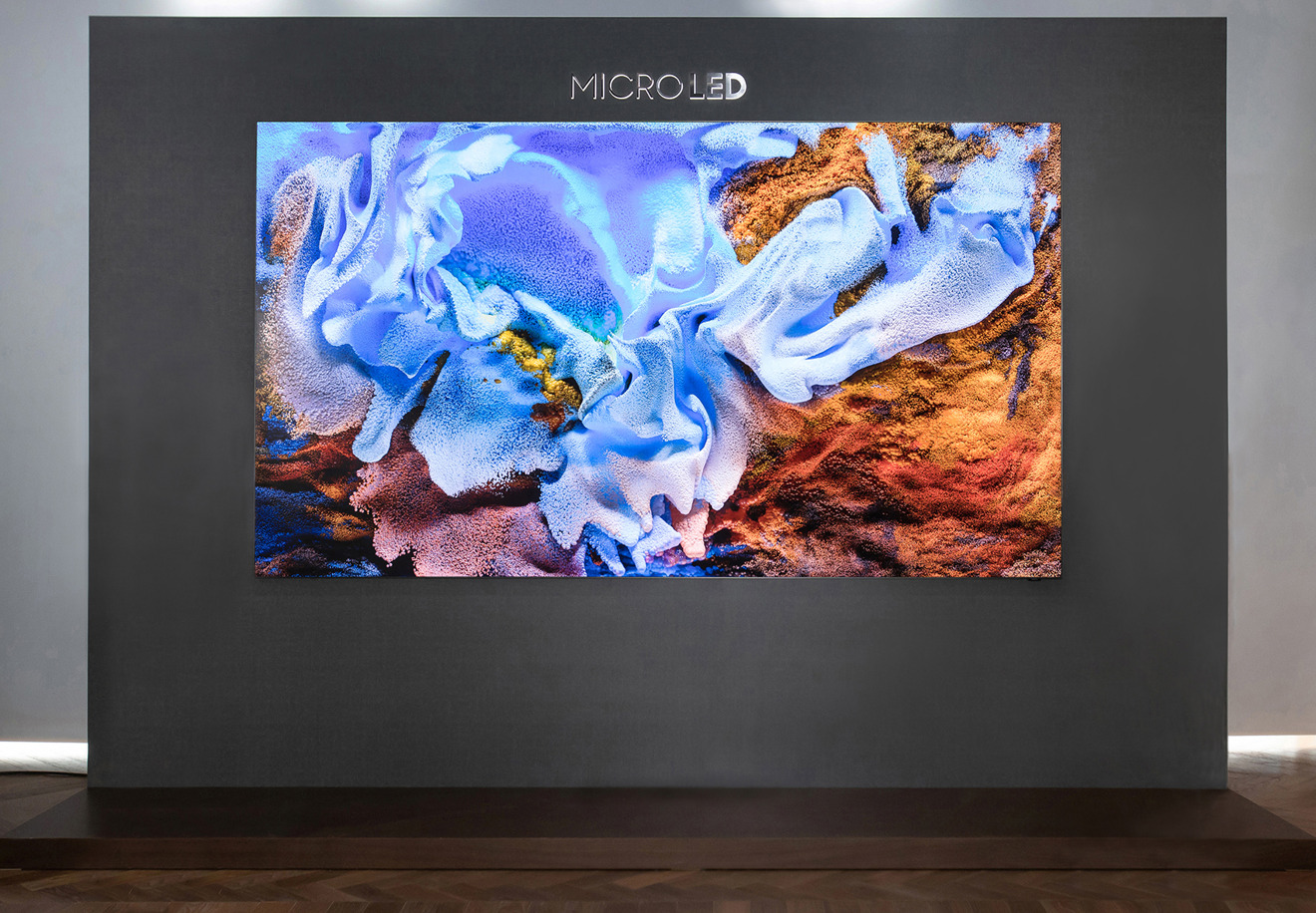Apple has brought mini LED to many products, including iPad Pro and MacBook Pro, and is also working on micro LED technology. Here’s what to expect from the new display technologies set to take over from TFT LCD and OLED.
Display technology has been slow to change, with the industry seemingly taking decades to move from one to the next. Cathode ray tube (CRT) screens hung around for ages until thin and light TFT LCD screens became cheap and attractive enough for consumers to adopt.
OLED screens were previously touted as the next big display technology, but it has only really become commonly used within the last few years.
Inevitably, when a technology has started to see wide adoption by the industry, the attention then turns to what is on the way. With Apple’s interest in microLED and mini LED, the use of mini LED in the iPad Pro and MacBook Pro ranges, and the potential use of both technologies in future products, this has prompted a lot of interest from observers.
The two technologies are interesting, and each provides its own benefits to the device table. In the case of microLED, it introduces a major fundamental change in the way devices are designed, produced, and appear to consumers.
To fully understand what the inbound tech can potentially do, you need to understand where we are with current display technologies.
TFT LCD, and LED backlighting
One of the older and more established display technologies in use today, TFT LCD stands for Thin Film Transistor Liquid Crystal Display. It has been in use in screens for decades, most commonly in notebooks, but it is also used in tablets, smartphones, and other mobile devices.
The technology is relatively similar to the segmented screen of a calculator, in that it relies on a series of layers to sandwich a liquid crystal material. When a current is applied, the properties of the liquid crystal material can change, and so it affects how light passes through it.
In a simple calculator display, pockets are formed in the layers to contain the liquid crystal material in a specific formation, and applying current in these areas allows certain segments to become opaque while others remain transparent or translucent. Controlling which of these segments have current applied to them in different combinations shows different numbers.
In a TFT LCD screen, the core concept is the same, but it is altogether more involved.
Instead of a segment of a number, there are instead millions of little pockets across the screen in a grid of pixels. Using pockets with color filters for red, green, and blue, these segments can be used to show different combinations of colors.
Each group of these smaller pockets can be used to create a pixel. By varying the voltage, each section’s opacity can be varied, allowing for more colors to be displayed when used in concert with others.
Polarizing filters are on either side of the display sandwich, used to force light to pass through in a specific way. The LCD sections can block the light from passing through, resulting in a dark or black pixel in that section.
An important element of the system is light, which is transmitted from behind the TFT LCD stack. Without that light, the screen will appear dark and largely unviewable to the user.
For many years, this has involved the use of LEDs in a backlight, spread out across the edges of the screen and funneled across to illuminate the entire backlight.
TFT LCD offers a cheap, cost-efficient, and highly reliable way to include a display in their device for device producers. The long lifespan of the technology means it is already quite mature, though with relatively few ways to expand the technology in new directions.
TFT LCD has been a staple of Apple’s product range for many years, from MacBooks and iMacs to the iPhone and iPad. While Apple is certainly looking into other areas to improve its products’ displays, and has moved some of its popular products onto, it at least has a well-worn technology it can fall back on if required.
OLED and self-illuminating pixels
The next major display technology for thin portable screens after TFT LCD was OLED, which means Organic Light Emitting Diode. While the names are dramatically different, there are many elements of OLED that borrow heavily from TFT LCD, but there are still some fundamental differences.
Like TFT LCD, OLED uses thin film layers, a grid of pockets filled with a liquid to create pixels, and colored filters to change the color of light. Unlike TFT LCD, the big differentiator is the liquid that is put into that film sandwich.
An organic compound is used, one that emits light when a current is passed through it. This means that each pixel is self-illuminating and eliminates the need for a backlight.
This offers quite a few advantages over TFT LCD, such as an OLED screen being thinner by not requiring a backlight in order to function. This can also make the display assembly lighter and simpler to construct in some cases.
By having a light source per pixel, this also means that OLED can provide far higher contrast levels than TFT OLED. A TFT screen generally won’t show pure black for some pixels, as the backlight will be on for all pixels equally, and so some light will bleed through and show a very dark grey instead.
There is also the potential for power savings, as OLED requires power to illuminate only the pixels it requires. TFT LCD typically requires all of the LEDs in the backlight to be on, regardless of the type of image being shown.
While great, OLED panels have their own issues, such as the relatively high cost of production due to a need for clean environments devoid of dust and water. Each is easily capable of contaminating the display, ruining it partially useless.
Apple started using OLED in the iPhone X and the Apple Watch, and has slowly expanded its use to cover the entire iPhone range.
Apple has been long been rumored to be introducing OLED to its iPad Pro lineup instead of TFT LCD, with mid-2023 speculation putting an OLED iPad Pro release sometime in 2024. Currently, Apple’s iPad Pro range use mini LED backlighting behind a TFT panel.
For the iPad, the use of OLED could allow for even thinner tablets with higher contrast levels. However, the typically longer use of a tablet could lead to burn-in or a loss of brightness over time for the OLED panels. Samsung was once rumored to add a distribution chamber to an OLED production line, which would allow the stacking of emitting layers, as a way to solve the burn-in problem.
With these extra layers, the OLED screen’s lifespan could be extended beyond typical durations.
The use of the technology isn’t necessarily limited to tablets and smartphones. There have been rumors over the years claiming Apple was going to add OLED to its MacBook Pro line, with the latest rumors pointing to an OLED MacBook arriving in 2027.
There have been sketchy rumors of a roadmap for release for an OLED iMac. An April report claimed that Apple would shift to OLED for the iMac from 2027.
The Apple Vision Pro, the company’s mixed-reality headset, employs micro OLED displays for each eye, with each capable of the equivalent of a 4K resolution. However, the component has been troublesome to produce, and has been blamed for a reduction in production orders due to the difficulties of manufacture.
Mini LED for better backlighting
While the allure of TFT LCD is tempered in the face of OLED, there is a technology that could offer a compromise: Mini LED. As the name suggests, it is basically an LED, but at a much smaller scale.
The easiest way to understand what the use of mini LED is to a device maker is to realize that it’s essentially TFT LCD but with a much better backlight. Instead of using a backlight with a few larger LEDs, consider one that is instead made up of thousands of smaller mini LEDs in a grid.
The overall light output of LED and mini LED may ultimately be comparable, and it doesn’t change how TFT LCD fundamentally works. But, it does offer some tricks that can give it usability comparable to OLED.
For a start, by using thousands of mini LEDs, you have the opportunity to tune the amount of light emitted from the backlight system itself. Instead of seeing a bleed-through of light in a part of the screen that is supposed to be dark, you can instead turn the relevant mini LED down or off to get much darker shades.
The entire rear of the 12.9-inch iPad Pro display houses a layer of over 10,000 mini LEDs as a backlight. Each group of four is a localized dimming zone. [via Apple]
This is a trick that is already being performed by some high-end televisions, using an array of LEDs in the back and changing their brightness to better suit that area of the screen.
Apple’s Pro Display XDR also does this with an array of 576 “local dimming zones” to provide as close to an ideal luminosity as possible to different sections of the screen.
In effect, this can provide contrast levels comparable to OLED. Whether it is the OLED self-illuminated pixel or the mini LED backlight behind a pixel being turned off, the absence of light still results in a black screen.
With the use of thousands of mini LEDs in use, this equates to thousands of “local dimming zones” in a future display, far more than the Pro Display XDR‘s few hundred.
Obviously, this costs more than a traditional backlight to implement, but it may still be cheaper to use than OLED, and with comparable results. Add in the maturity of the underlying TFT LED technology, and it becomes a desirable proposition to device vendors like Apple.
Apple started to dip its toe into mini LED with the 12.9-inch iPad Pro, which uses 10,000 mini LEDs for its backlight. Spread across the entire backlight area, the change introduces more than 2,500 local dimming zones, enabling extremely fine control over brightness and contrast.
The Liquid Retina XDR display of the 2021 12.9-inch iPad Pro is bright and has a very high contrast ratio.
The change also resulted in a contrast ratio of 1,000,000:1, an average brightness of 1,000 nits instead of 600, and a peak brightness of 1,600 nits for HDR content. Apple also managed to accomplish this while making the 12.9-inch iPad Pro only half a millimeter thicker than the previous model.
After the 12.9-inch experiment, Apple also brought the same backlighting system to some of its other devices with significant displays, including the 14-inch MacBook Pro and the 16-inch MacBook Pro.
Curiously, Apple has not turned the other iPad Pro, the 11-inch model, into a mini LED device. It is probable that Apple isn’t bothering with the change, given it could simply jump to OLED by 2024 for the product range.
There have been some murmurs of Apple bringing back a large-screened New iMac, possibly with a 27-inch or bigger display using mini LED backlighting. However, there have also been rumors that it won’t have a mini LED after all.
As the die cost for mini LED is fairly high due to being a relatively immature technology that is only beginning to be commercialized, Apple is keen to bring that cost down. Kuo reckoned in 2020 that by bringing aboard production partners like Sanan Optoelectronics, Osram, and Seoul Semiconductor, Apple could bring the cost of production down considerably.
In 2022, Apple planned or Sanan Optoelectronics to become its third mini LED supplier, following after Epistar and Osram, but the company failed to gain certification for the supply chain.
Though a setback, it does at least demonstrate that Apple is still keen to employ and invest in the technology in future devices, at least before it takes a quantum leap forward with microLED.
MicroLED and a radical shift in display technology
If you want to go one stage further than mini LED, the only way you can go is smaller. That means looking at microLED.
Much like mini LED, microLED uses very small LEDs, but at an extremely tiny scale. Instead of thinking of LEDs at the millimeter scale, microLEDs are instead at the micron level.
Furthermore, microLED diverges from TFT LCD greatly by not using a backlight. Instead, the microLEDs are used directly to make the picture.
The microLEDs are deposited in a pattern, with each able to emit red, green, or blue light. Grouped together, a collection of microLEDs can become a pixel, all without requiring a color filtering layer.
Stack enough of these microLEDs together into a grid, and you have a display.
A large screen at a stadium uses groups of LEDs for individual pixels. A microLED screen follows the same principle. [via Colosseo]
Think of it like the giant screen in a stadium, where each pixel can be made up of an LED or a group of LEDs. A microLED display is the same principle, except much, much smaller.
By reusing LED technology in miniature, the system provides quite a few benefits in terms of picture quality. You have the same self-illuminating pixel as OLED that doesn’t have the backlight bleedthrough problem, and so it should reach OLED levels of contrast.
There are power savings through per-pixel illumination and general power efficiency over OLED. There’s also the potential to create an image with a considerably higher brightness than OLED, up to 30 times brighter.
Inorganic materials also give LED-based systems an advantage over OLED, as they will generally last longer than their organic-based rival.
For device producers, the lack of contamination issues from water and dust makes it better to work with OLED, increasing manufacturing yields. However, the relatively new technology will also be the most expensive to implement until it matures.
There are also applications for flexible and foldable displays, with microLED less likely to break or be damaged from stress than OLED panels if used with a flexible-enough substrate.
Apple’s march to microLED
As the biggest departure from TFT-style displays with major potential improvements, Apple has put considerable work into developing microLED for its own uses.
The earliest reportable connection to microLED was Apple’s acquisition of LuxVue in May 2014. The company was a microLED specialist and held numerous patents related to microLED that Apple had the potential to use.
It was reported in March 2018 that Apple operates its own secret engineering and manufacturing facility, specifically for microLED research. The 62,000 square-foot facility is allegedly located a mere 15 minutes from Apple Park, and in 2018 was thought to house 300 engineers working on project “T159.”
There was also talk at the time of Apple working with TSMC on the technology, with a view to making potential display panels for the Apple Watch. Assembly partner Foxconn was also linked to a microLED effort in 2019, though it seems that was more to explore the use of the technology down the line.
In May 2020, Apple was reportedly investing around $334 million into a factory in northern Taiwan for the production of mini LED and microLED display panels.
Apple has also received a patent about microLED production that could improve the reliability and quality of displays. The patent, granted on February 23, seeks to test microLEDs before they are placed onto a display, which can reduce wastage and the chance of defects passing through to final products.
Unlike TFT, OLED, or mini LED, microLED is still quite a long way from being made available in an Apple product.
Chairman of Epistar Lee Biing-jye said in August 2020 that the company was working on the technology, but that it and rivals have repeatedly encountered difficulty in producing the displays. The company suggested it would be able to produce a microLED display for an Apple Watch in two to three years, while volume adoption of microLED for larger displays like a television could be four to five years away.
The distinction for it to be volume production is important, as production yields of the displays are currently too low for it to be reasonable to use at massive scales. This hasn’t stopped companies from shaking down the technology.
In 2018, Samsung introduced “The Wall,” a module-based professional display that used microLEDs. By late 2020, it had created a 110-inch microLED television, which it intended to sell from Q1 2021 at a cost of around 100 million won ($90,000 at the time) in Samsung’s home country, South Korea.
While there have been other commercialization attempts for the technology, none of them have yet to be done at what could be considered a vast scale, even a few years after Samsung’s early attempt. In part, it’s due to the early stage of commercialization and the issue of production cost, which will take time to be brought down to a more acceptable level.
Of those who have invested in the technology, Apple may end up being the closest to actually commercializing microLED properly, both at scale and in a product that’s decidedly more affordable than Samsung’s television. All thanks to its own private development of microLED technology.
With such a technology, the prospect of the often-rumored foldable iPhone could become more of a reality without the risks of cracking. The displays used in its mobile devices would also benefit from using less power, which in turn could increase the overall power consumption of the product.
Taking into account its research and secret project work, it is probable that Apple will also be able to squeeze out all the cost savings it can from making the microLED screens in the first place.
A report from May 2023 indicated that Apple’s significant investment into microLED R&D over the last decade will allow it to take charge of the “mass transfer” phase of the manufacturing process. This is the time when the microLED chips are deposited onto substrates, with a covert R&D facility in Taoyuan, Taiwan working on the project.
Having control over this phase doesn’t necessarily mean Apple will actually perform this stage of manufacturing itself, but rather it will have a lot more of an ability to direct those contracted to work on its behalf.
Its control over production could even allow it to create a microLED display as part of the enclosure of a product. This may enable radical designs that incorporate the screen in the housing, rather than leaving the display as a discrete component.
Back in 2020, analysts predicted that Apple will first use a microLED screen in an Apple Watch by 2023 or 2024. The prediction made sense, as the Apple Watch uses a small display, making the per-device cost for the display smaller than for devices like an iPad.
By 2023, the rumor had evolved and become more refined, with Apple expected to replace the OLED display in its premium Apple Watch Ultra with a microLED version. However, the time for its release is slated to be even later, with an early 2025 introduction pushed back to the first quarter of 2026.
While the Apple Watch Ultra is a great candidate for the technology, the Apple Vision Pro’s high-resolution and high-quality displays also put forward the idea that Apple could use microLED in a future headset.
There are many possibilities that Apple’s work on microLED could lead to, and many more results that could occur. However, like the rest of the industry, it will take time before those first products will become available to buy.
In the meantime, Apple has mini LED that it can offer to consumers. It may not be a seismic shift in display technology, but it will still provide a major upgrade to consumers as work on microLED marches on, without necessarily needing to create OLED versions of its components.
Updated July 10, 2023: Updated with microLED shipped products, and more details about the other screen technologies that have emerged since original publication.


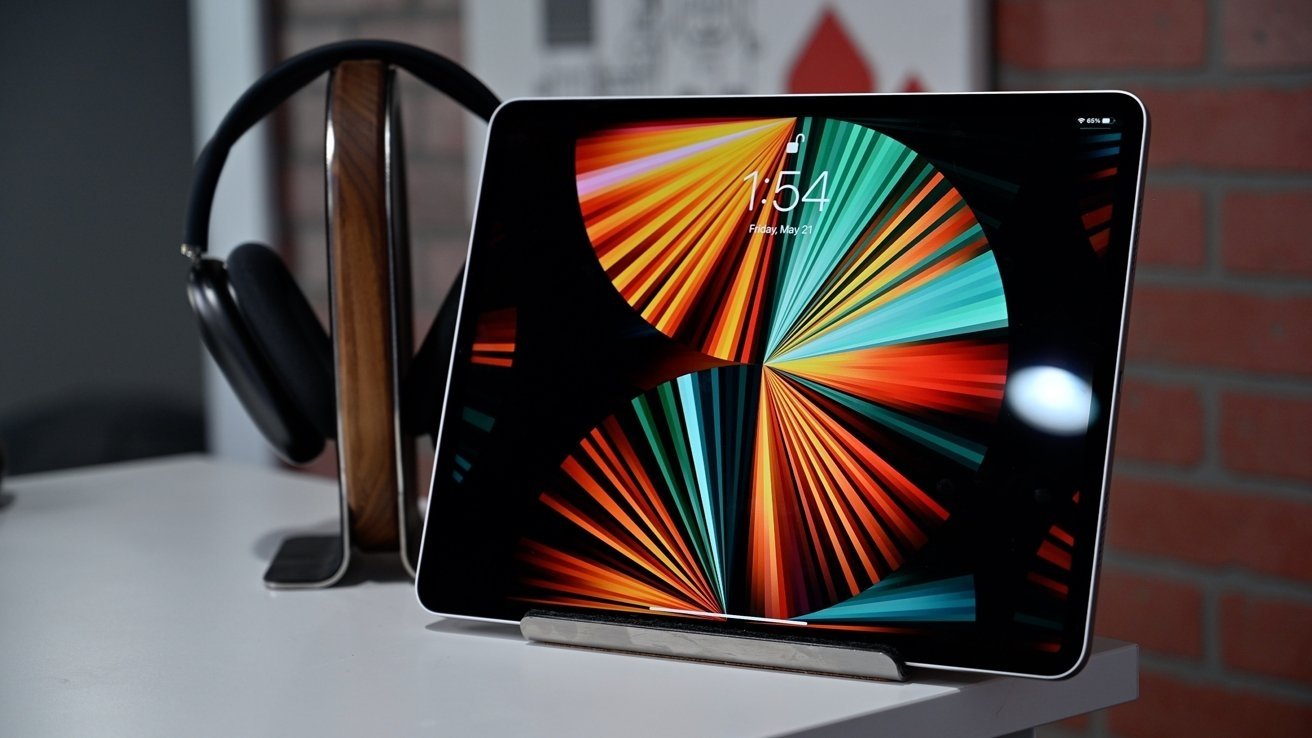
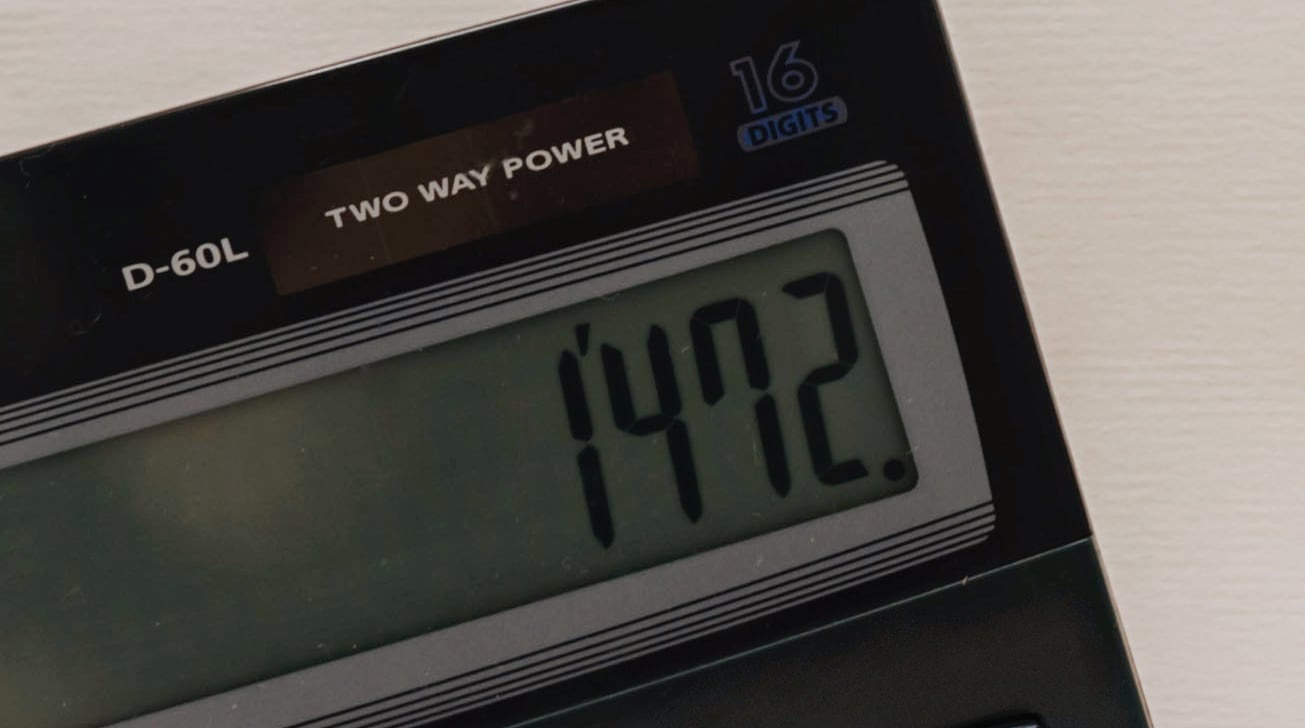
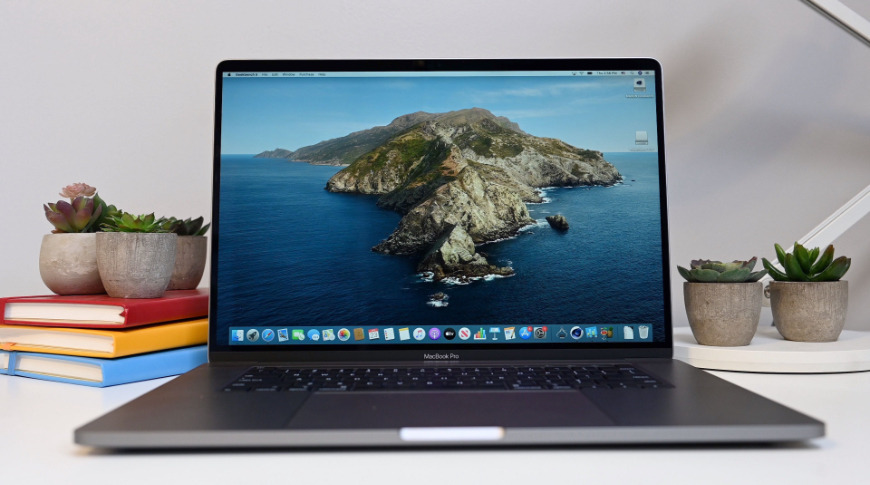
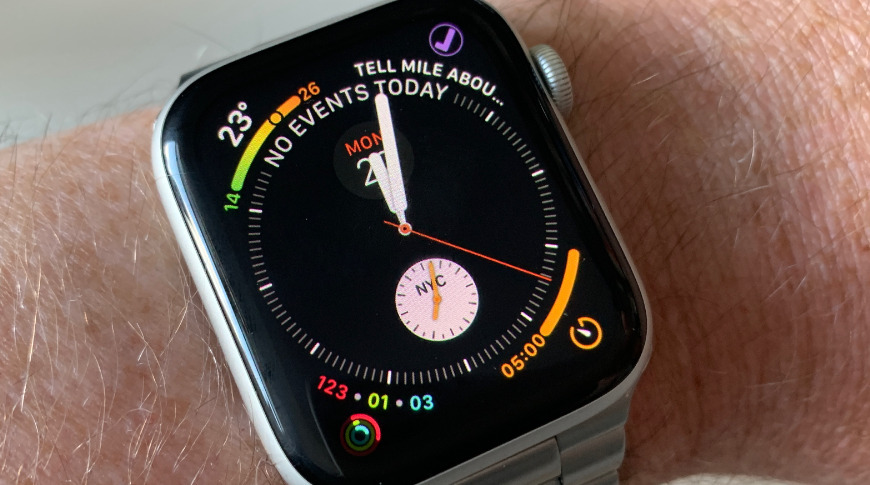
![The entire rear of the 12.9-inch iPad Pro display houses a layer of over 10,000 mini LEDs as a backlight. Each group of four is a localized dimming zone. [via Apple]](https://photos5.appleinsider.com/gallery/40443-82083-ipad-pro-129-mini-led-xl.jpg)
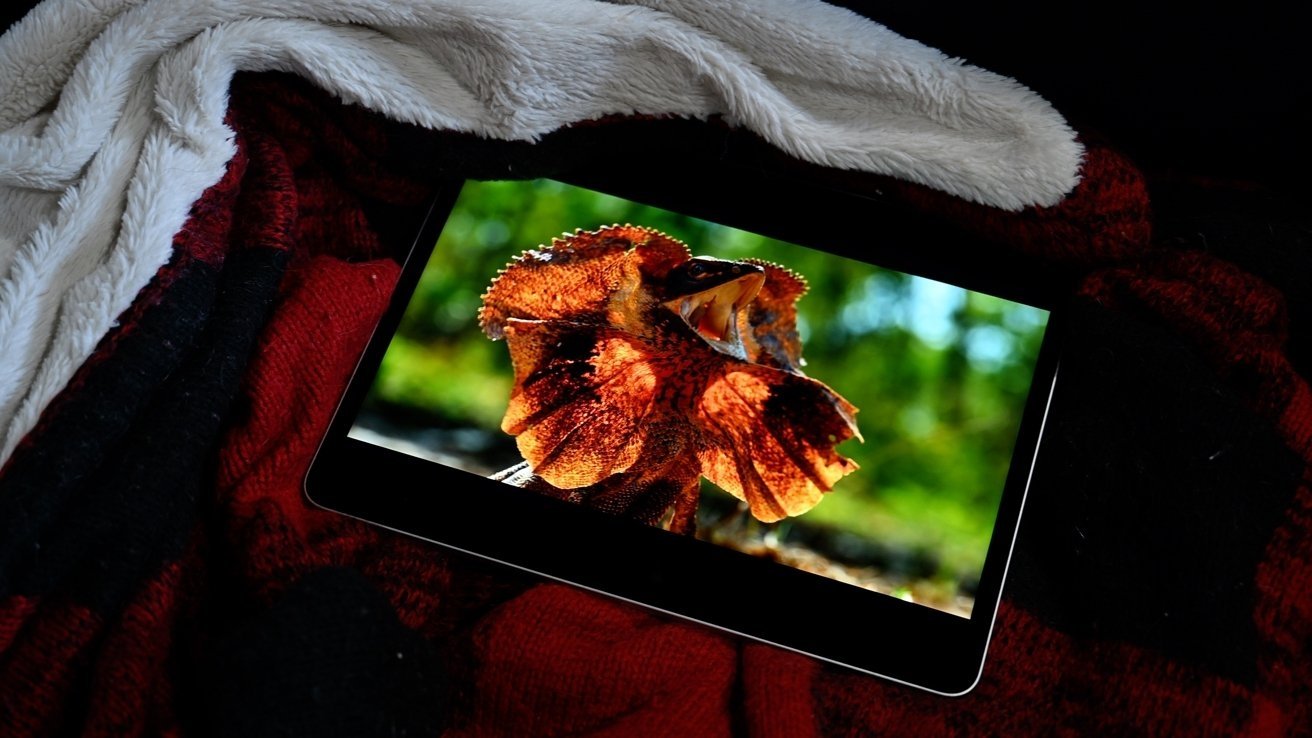
![A large screen at a stadium uses groups of LEDs for individual pixels. A microLED screen follows the same principle. [via Colosseo]](https://photos5.appleinsider.com/gallery/40443-78146-stadium-display-xl.jpg)

